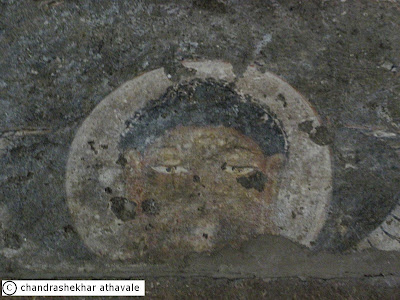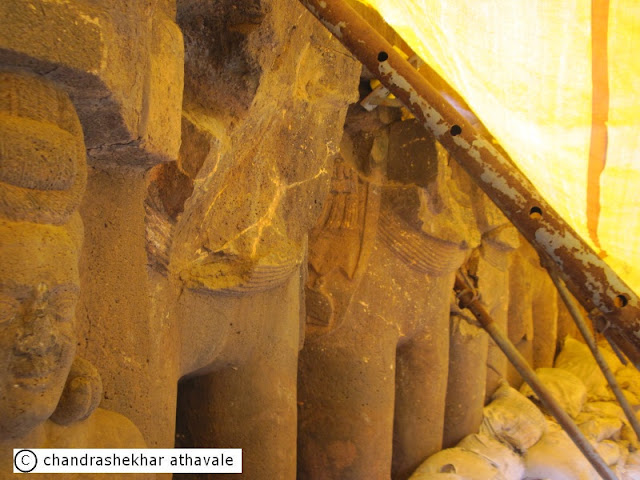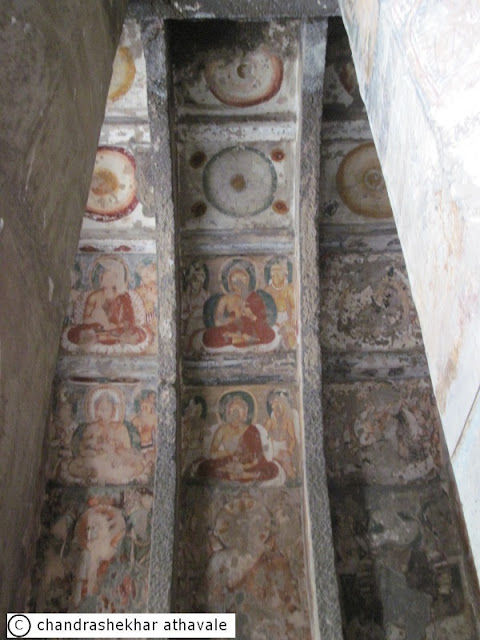Buddhist temple of Pitalkhora
As rightly reported by Burgess, the internal arrangement in this Vihara is very similar to the contemporary vihara, number 12 of Ajintha.
Even the canopies over cell doors in Chaitya fashion are also similar. The major difference comes from the pillars and capitals engraved on the cell wall in bass relief fashion. I walk along the wall, looking at the pillars and the capitals. Starting from left, each and every bell shaped capital is engraved with different intricate designs.
The real surprise however comes from the pair of animals shown seated above the bell shaped capitals just below the ceiling.
As rightly reported by Burgess, the internal arrangement in this Vihara is very similar to the contemporary vihara, number 12 of Ajintha.
Even the canopies over cell doors in Chaitya fashion are also similar. The major difference comes from the pillars and capitals engraved on the cell wall in bass relief fashion. I walk along the wall, looking at the pillars and the capitals. Starting from left, each and every bell shaped capital is engraved with different intricate designs.
The real surprise however comes from the pair of animals shown seated above the bell shaped capitals just below the ceiling.
Even the canopies over cell doors in Chaitya fashion are also similar. The major difference comes from the pillars and capitals engraved on the cell wall in bass relief fashion. I walk along the wall, looking at the pillars and the capitals. Starting from left, each and every bell shaped capital is engraved with different intricate designs.
The real surprise however comes from the pair of animals shown seated above the bell shaped capitals just below the ceiling.


















































































No comments:
Post a Comment